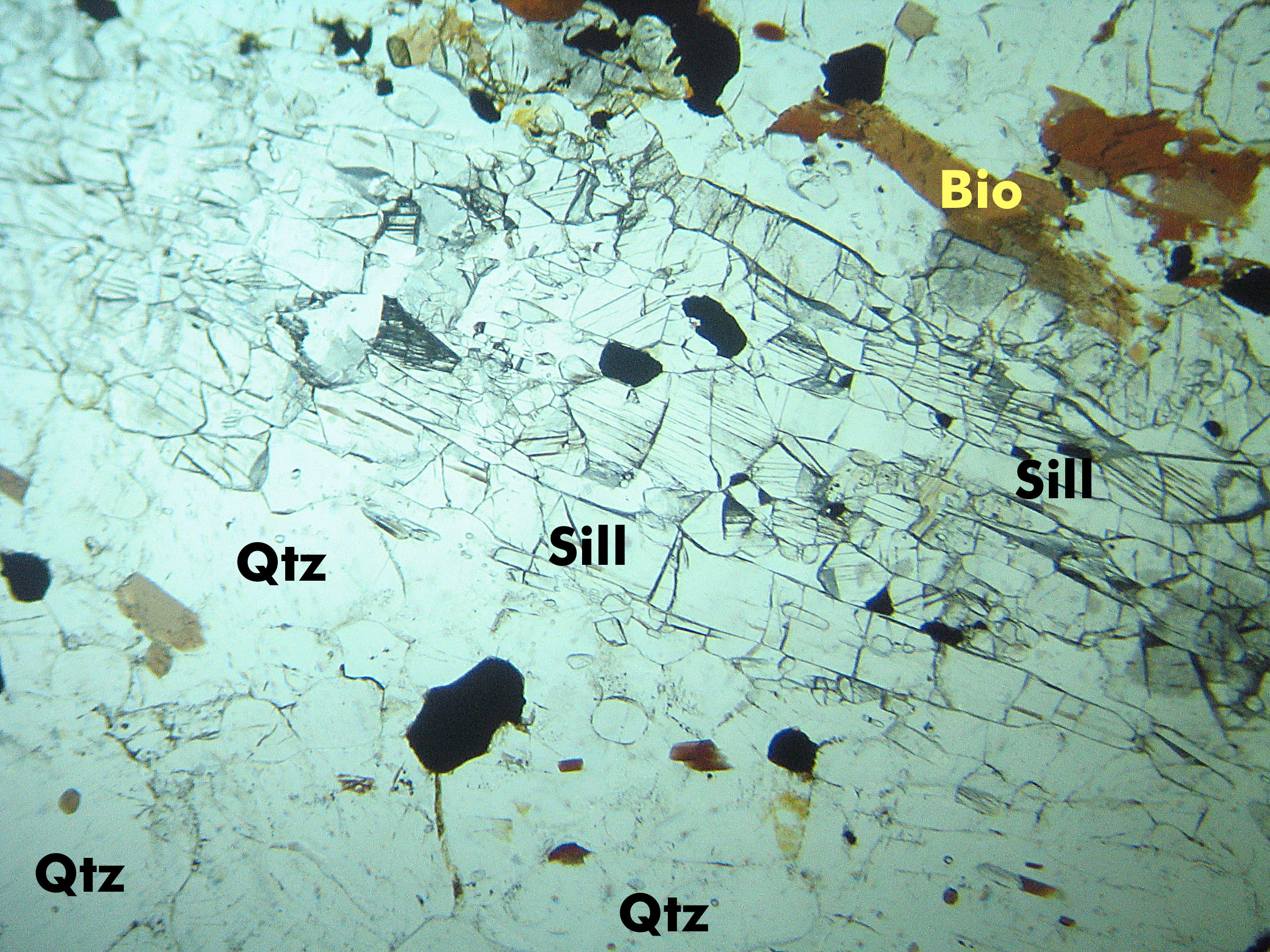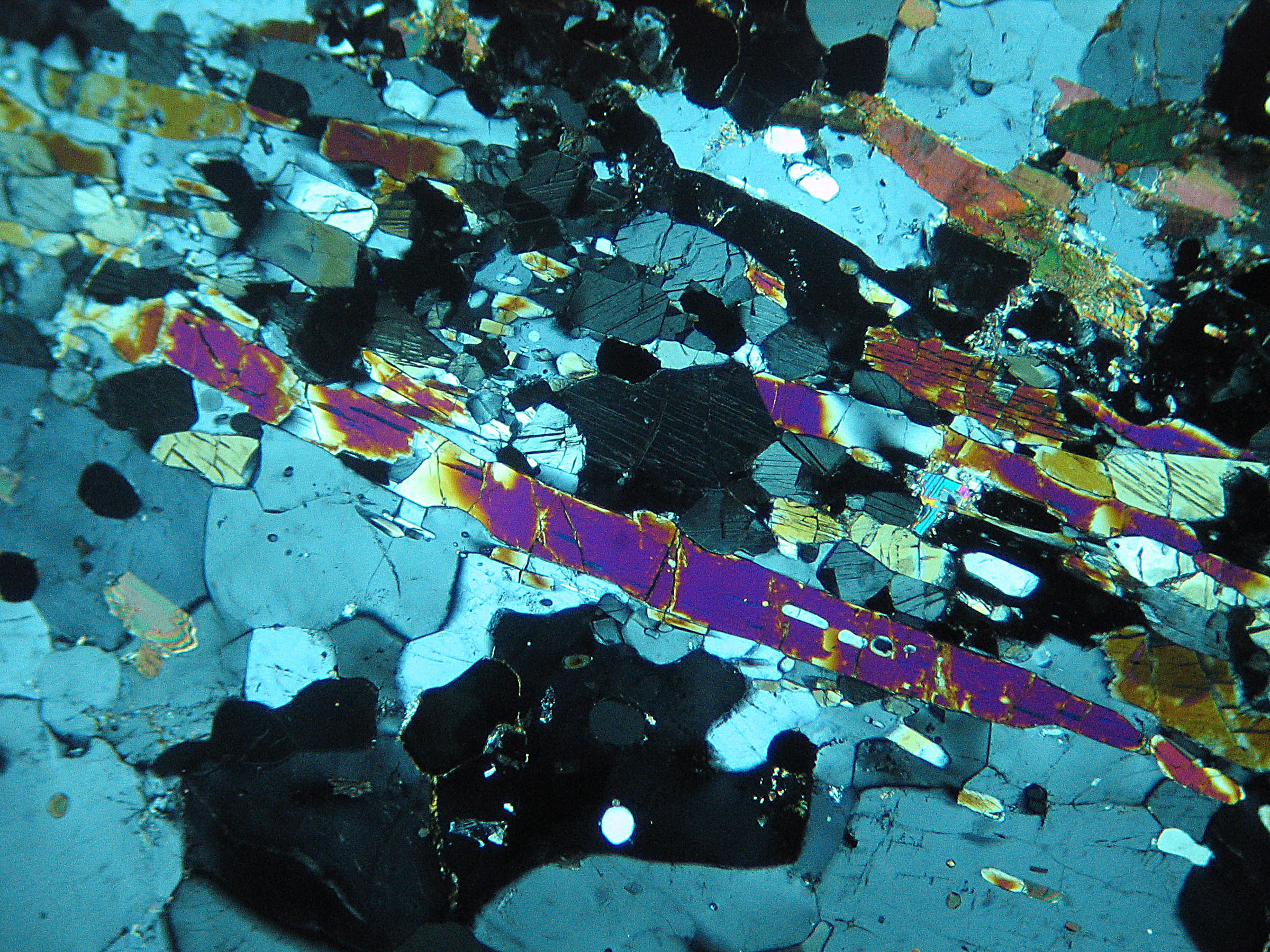Quartz and Feldspar
Here we see quartz. plagioclase and, less obviously, K-feldspar are also present. All three exhibit about the same relief (because they have about the same index of refraction) and so there is little relative relief visible in these views


Biotite
The large greenish brown to tan grains are biotite. The clear to very light green (PP) blocky mineral above and to the left of the biotite (and also just below the biotite) is orthopyroxene. It has higher relief than the biotite and so appears sharper and stands out from the biotite in the PP view. Cordierite is also present; it has relief intermediate between the biotite and orthopyroxene.
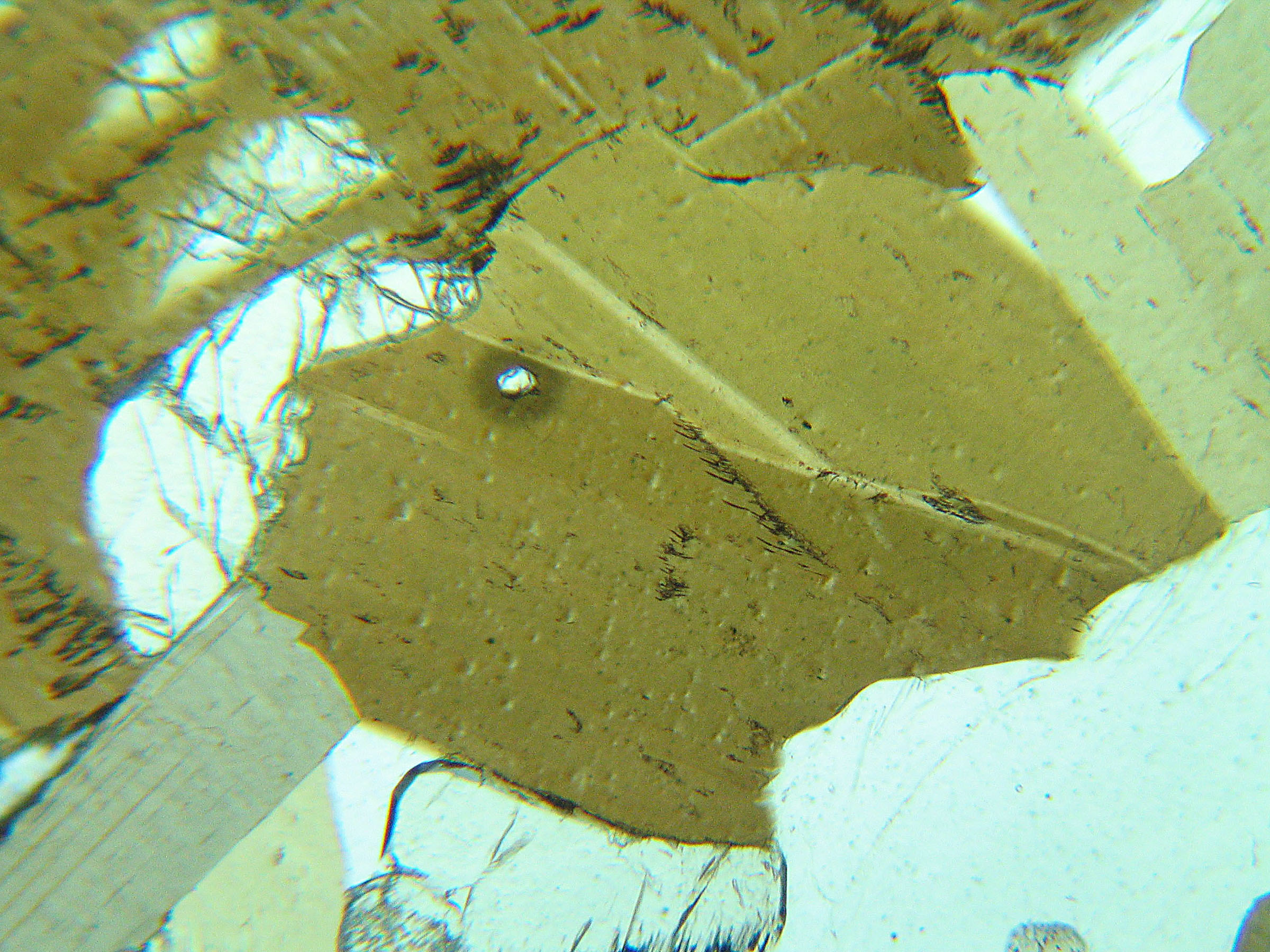
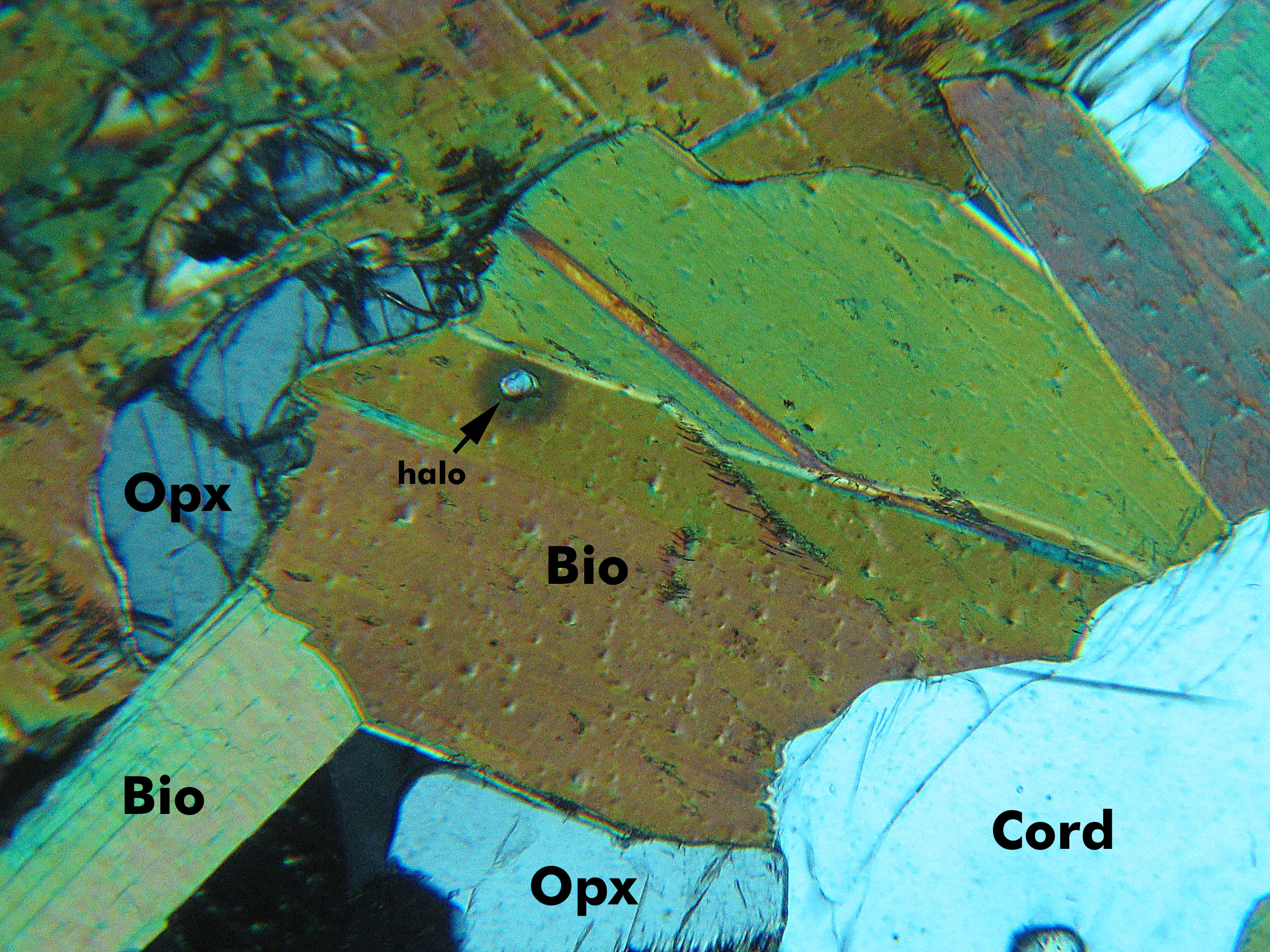
Diopside
The large grain at the center of this view is diopside. In the PP view, the diopside can be seen to have significanlty greater relief than surrounding calcite, (stained pink to aid identification). The large grain of diopside also exhibits well developed cleavage and, in the XP view both the dopside and calcite can be seen to be twinned.
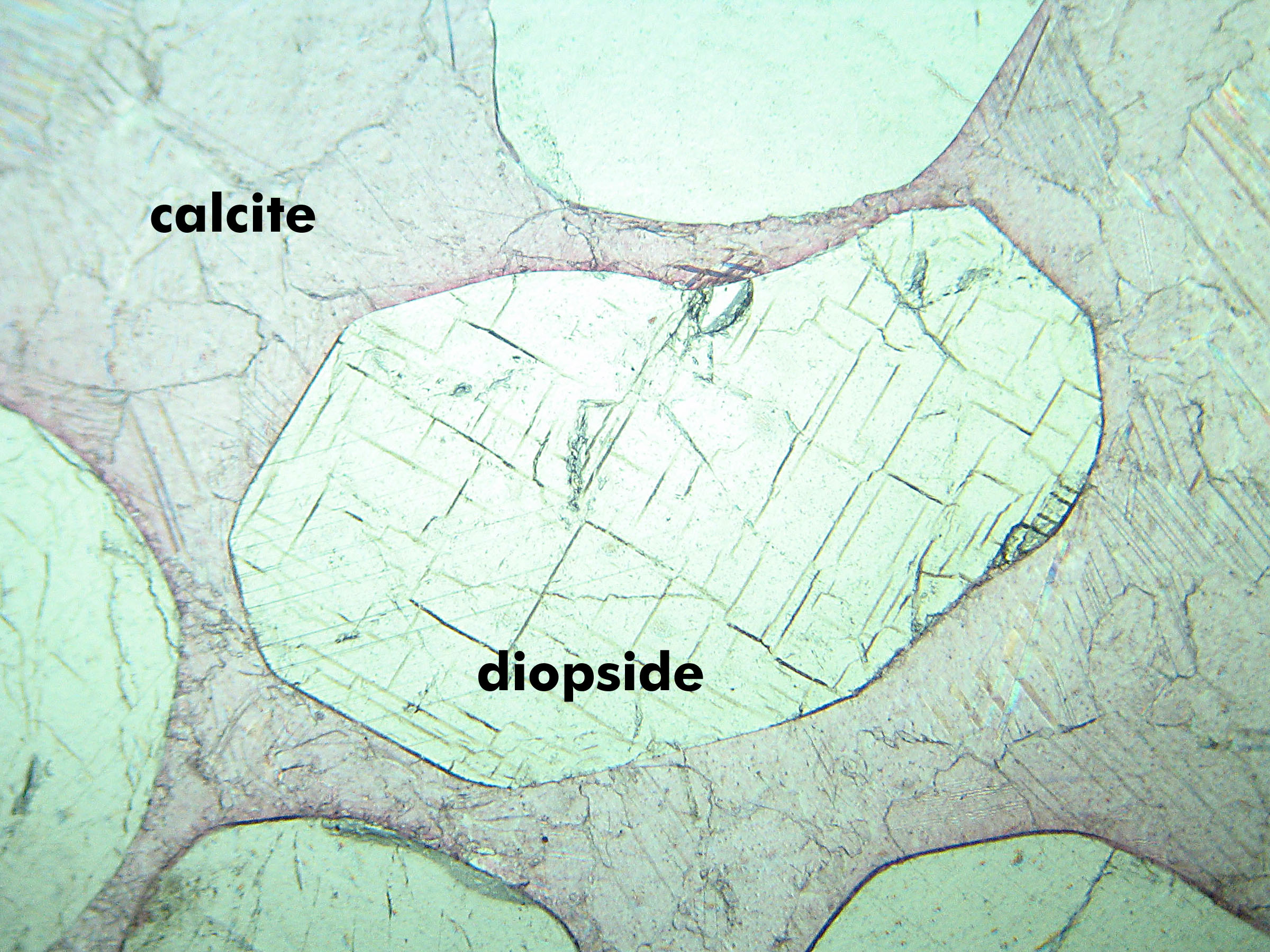
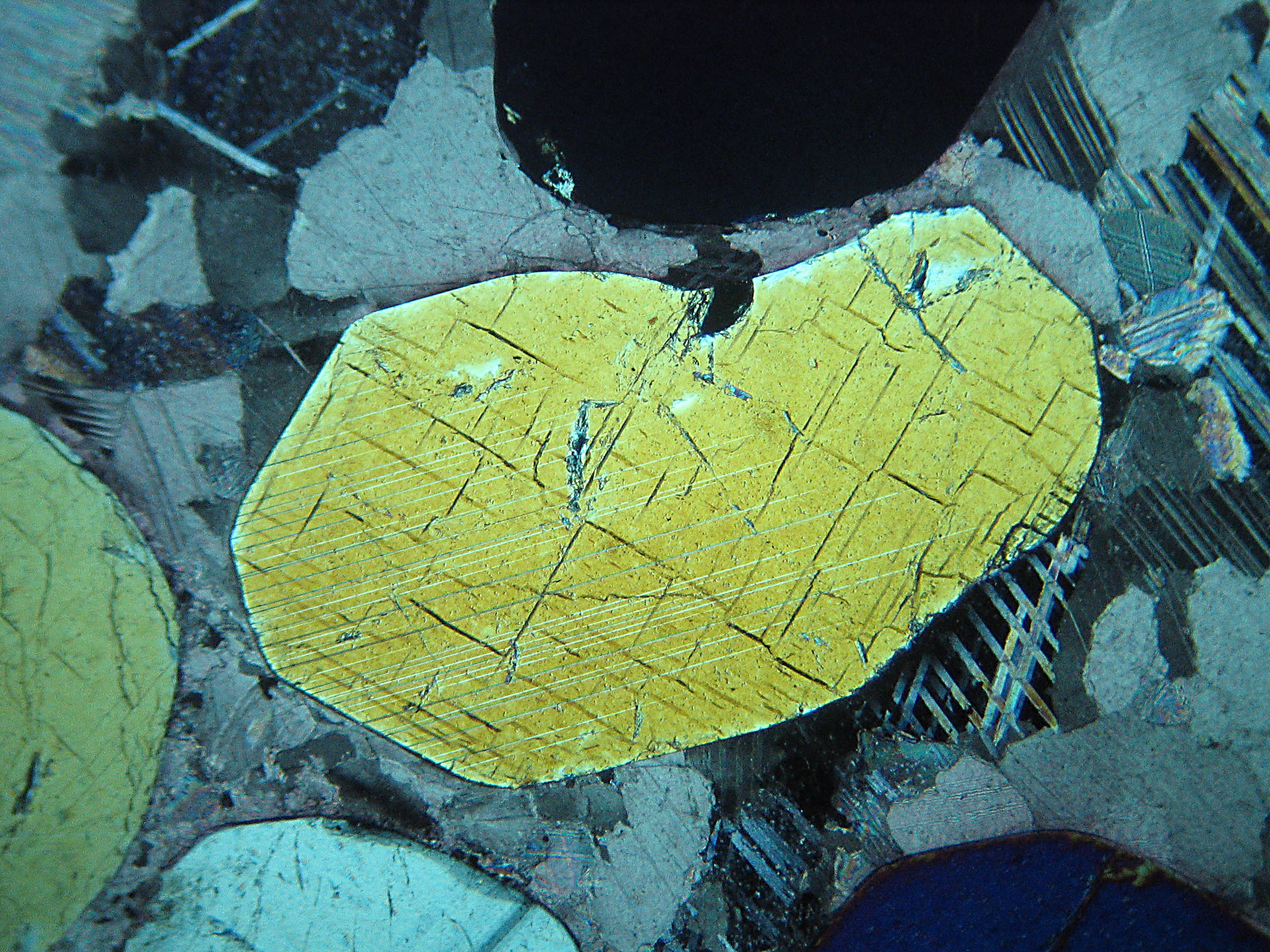
Sillimanite and Quartz
This sample contains needles of sillimanite (somewhat fractured), quartz, biotite and magnetite. The sillimanite has higher relief than surrounding quartz, and so stands out and has sharp grain boundaries (PP). In the XP view, the quartz shows low order white-gray interference colors, while the biotite and sillimanite higher order colors.
